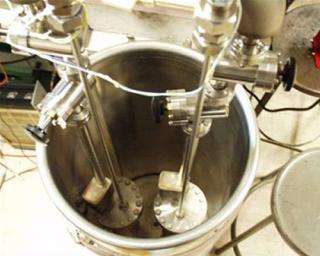May 27, 2008 weblog
Physicist Claims First Real Demonstration of Cold Fusion

To many people, cold fusion sounds too good to be true. The idea is that, by creating nuclear fusion at room temperature, researchers can generate a nearly unlimited source of power that uses water as fuel and produces almost zero waste. Essentially, cold fusion would make oil obsolete.
However, many experts debate whether money should be spent on cold fusion research or applied to more realistic alternative energy solutions. For decades, researchers around the world have been simply trying to show that cold fusion is indeed possible, but they´ve yet to take that important first step.
Now, esteemed Physics Professor Yoshiaki Arata of Osaka University in Japan claims to have made the first successful demonstration of cold fusion. Last Thursday, May 22, Arata and his colleague Yue-Chang Zhang of Shianghai Jiotong University presented the cold fusion demonstration to 60 onlookers, including other physicists, as well as reporters from six major newspapers and two TV studios. If Arata and Zhang´s demonstration is real, it could lead to a future of new, clean, and cheap energy generation.
In their experiment, the physicists forced deuterium gas into a cell containing a mixture of palladium and zirconium oxide, which absorbed the deuterium to produce a dense "pynco" deuterium. In this dense state, the deuterium nuclei from different atoms were so close together that they fused to produce helium nuclei.
Evidence for the occurrence of this fusion came from measuring the temperature inside the cell. When Arata first injected the deuterium gas, the temperature rose to about 70° C (158° F), which Arata explained was due to nuclear and chemical reactions. When he turned the gas off, the temperature inside the cell remained warmer than the cell wall for 50 hours, which Arata said was an effect of nuclear fusion.
While Arata´s demonstration looked promising to his audience, the real test is still to come: duplication. Many scientists and others are now recalling the infamous 1989 demonstration by Martin Fleischmann and Stanley Pons, who claimed to produce controlled nuclear fusion in a glass jar at room temperature. However, no one - including Fleischmann and Pons - could duplicate the experiment, leading many people to consider cold fusion a pseudoscience to this day.
But one witness at the recent demonstration, physicist Akito Takahashi of Osaka University, thought that the experiment should be able to be repeated.
"Arata and Zhang demonstrated very successfully the generation of continuous excess energy [heat] from ZrO2-nano-Pd sample powders under D2 gas charging and generation of helium-4," Takahashi told New Energy Times. "The demonstrated live data looked just like data they reported in their published papers [J. High Temp. Soc. Jpn, Feb. and March issues, 2008]. This demonstration showed that the method is highly reproducible."
In addition, researchers will have to repeat the experiment with larger amounts of the palladium and zirconium oxide mixture in order to generate larger quantities of energy.
via: Physics World and New Energy Times





















